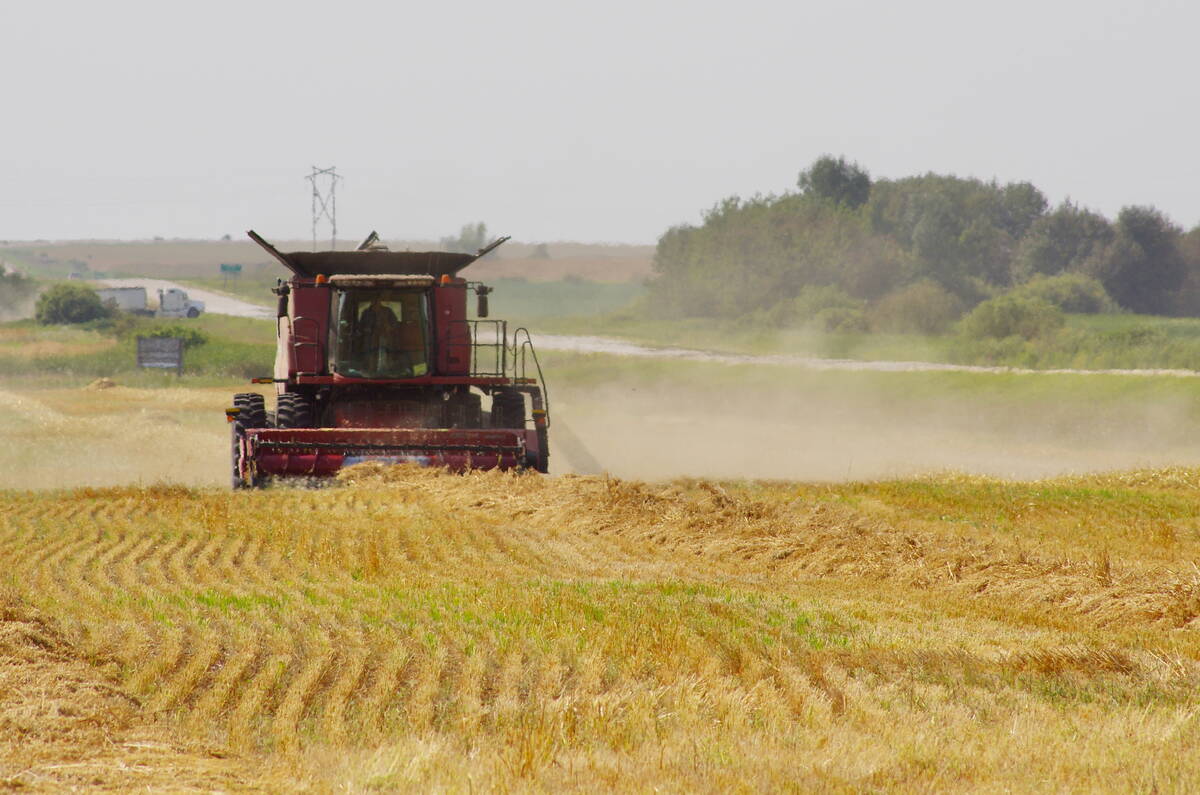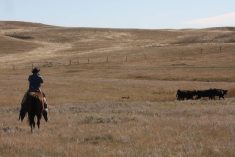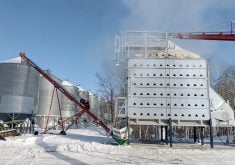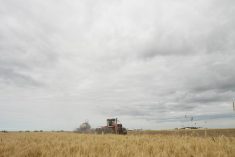With 22 million acres of canola in Western Canada, it’s a sure thing that flea beetles will damage or destroy a percentage of the crop every spring.
The damage is always variable.
One region will have severe flea beetle feeding and the next area, maybe 25 kilometres away, will have little or no damage to canola seedlings.
“Foliar application for flea beetles is widespread in canola fields…. Flea beetle pressure has been heavy, yet inconsistent, with some fields requiring up to three foliar insecticide applications while nearby fields at similar stages have seen only minor damage,” said the June 14 crop report from Manitoba Agriculture.
Read Also

Herbicide resistance sprouts in Manitoba’s wild oats
Farmers across Manitoba this fall are gearing up for the latest salvo in what, for many, has become a longtime battle to beat out wild oats.
Damage may be inconsistent, but some experts believe flea beetles have been getting worse. That could be related to the size of the canola crop in Western Canada.
In 2006, Canadian farmers seeded about 14 million acres of canola. Since 2012, canola acres have consistently reached 21 to 22 million acres, which means the beetles have a much larger source of food to sustain their population.
It’s possible flea beetles are now an endemic problem on the Prairies.
“That’s what we’ve been seeing in the last several years,” John Gavloski, Manitoba Agriculture’s extension entomologist, said in the winter of 2020.
“We seem to be stuck at these chronically high levels.”
The extreme flea beetle pressure continued in 2020 and 2021. Last year was especially bad, thanks to dry soil and frost. Canola emerged and developed slowly across the Prairies, giving the beetles more time to munch on sensitive seedlings.
The economic impact of the tiny pests is not small. In years with outbreaks, which seems like every year, flea beetles can cause yield damages worth hundreds of millions of dollars.
For about two decades the canola industry has relied on insecticide coatings on the seed to control flea beetles and protect the yield potential of the crop.
But some believe the chemicals are now less effective. University of Alberta researchers are trying to determine if the beetles have become resistant to neonicotinoids, the main class of insecticide seed treatments.
There are other seed treatments for flea beetles and foliar insecticides are still effective, but canola growers may need another solution.
One option could be a small acreage oilseed crop and a relative of canola.
“Camelina shows almost complete immunity to flea beetles, which is one of the benefits of this crop,” said Christina Eynck, an Agriculture Canada crop breeder in Saskatoon.
“From our own experience running large field programs for camelina and other brassica crops, I can say that it is a huge relief not needing to treat the seed with an insecticide or having to regularly spray the crop.”
Agriculture Canada research has verified that camelina is resistant to flea beetles.
Julie Soroka, a retired federal entomologist in Saskatoon, published a paper in 2013 about brassica crops and susceptibility to flea beetles.
Of the 200 species of brassicas that were tested, Soroka found that camelina “was virtually a non-host,” Eynck said in an email.
Flea beetles may not like camelina, but scientists don’t know how the oilseed repels beetles.
Eynck, who develops varieties of camelina and carinata at Agriculture Canada, said the resistance is possibly connected to the unique glucosinolates in camelina.
Glucosinolates are biologically active compounds found in the brassica family of plants, including broccoli, cabbage, cauliflower, rapeseed, mustard and horseradish.
“It has been hypothesized that camelina’s particular glucosinolate profile could contribute to its resistance to flea beetles,” Eynck said.
“Camelina contains three relatively unique glucosinolates.”
The compounds might deter flea beetles, or camelina may not have the glucosinolates found in canola, which attract the pests.
Isobel Parkin, a U of S scientist and an expert in brassica genomics, is hoping to answer some of the questions surrounding camelina and flea beetles.
Last year, the Saskatchewan Agriculture Development Fund provided $478,000 in funding to Parkin to explore the genetic source of camelina’s resistance to beetles.
The research is just underway, but if Parkin finds that a certain glucosinolate in camelina repels flea beetles and if she can identify the genes that produce the chemical, maybe it’s possible to move the genes into canola.

There are a lot of “ifs” in that sentence, but a flea beetle-resistant canola would be an attractive solution for the canola industry. It would cut the use of insecticides and might reduce flea beetle populations on the Prairies.
The concept may be appealing, but crop science companies live in a world of risk and reward.
Before pursuing a canola that’s resistant to flea beetles, plant breeders need to consider the genetic risk of a canola with glucosinolates similar to camelina.
“(What’s) giving them the tolerance is some of the metabolites and compounds within those cotyledons (of camelina). Those compounds are then usually residing within the seed as well,” Chad Koscielny, North American canola breeding lead with Corteva Agriscience, said from his home near Miami, Man.
Canola is mostly grown to produce canola oil, which is used for human consumption. If the composition, taste or properties of the oil are altered, it poses a massive risk to the canola oil industry.
“That’s some of the challenges in moving some of those specific deterrents or resistance mechanisms from something like camelina … into canola. Then you start messing with that canola quality,” Koscielny said.
“You could create a seed and (a plant) that flea beetles don’t like. Then you might end up with an end product, when it’s crushed, that consumers don’t necessarily want.”
Instead, Corteva is developing canola hybrids that grow more rapidly in the spring so the crop is less prone to flea beetle damage.
When prairie farmers seed canola in April or early May, there’s often a period of cold weather that stalls growth and gives the flea beetles more time to feed. Plus, if the canola seed is slow to germinate, the insecticide seed treatment may wear out before the flea beetles emerge.
“One of the things we’re focused on is early emergence (and) early growth, early vigour,” Koscielny said.
“And you combine that with an increased, I’ll call it cold tolerance, or a canola that can continue to grow at a lower base temperature.”
Corteva has had some success with new hybrids that grow more rapidly in spring conditions, but the company and the canola industry are also exploring insecticide solutions for flea beetles.
“We have a number of hybrids that have been relatively successful…. The other piece is the investment in seed treatments. And I know there is a considerable amount of investment in that space,” Koscielny said.
“There is awareness in the development industry that this (flea beetles) needs to be tackled.”
A plant that develops more rapidly and more insecticide options should help, but a canola hybrid with genetic resistance to flea beetles could be a longer term solution.
Perhaps the first canola with resistance traits could be a seed that’s crushed for something other than the human food market, maybe a canola that’s used as a feedstock for renewable diesel production.
“The results indicate possible sources of resistance to … flea beetles,” Soroka wrote in the paper from 2013 about brassicas that are susceptible.
“Our results are of particular value, given the current interest in development of new brassicaceous oilseed platforms for industrial uses.”


















